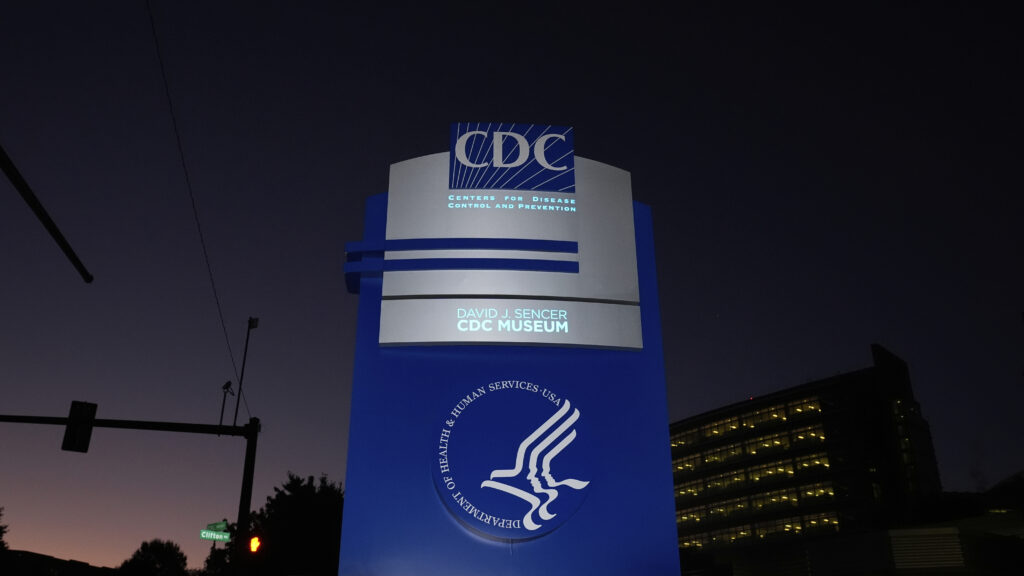Health
CDC Cuts Threaten Vital Health Data Collection Amid Layoffs

The recent layoffs at the Centers for Disease Control and Prevention (CDC) have raised alarms about the future of critical health data collection in the United States. The CDC’s National Center for Health Statistics (NCHS) lost its entire planning team for the National Health and Nutrition Examination Survey (NHANES) during the job cuts that took place last weekend. This survey serves as a crucial indicator of the nation’s health, providing data essential for public health policies.
Unlike the 600 other employees across various disciplines who were laid off but reinstated within 24 hours, those in the NHANES planning branch received no reprieve. The firings come amidst a broader reduction-in-force initiated by the Trump administration during a government shutdown linked to stalled budget negotiations. Andrew Nixon, spokesperson for the Department of Health and Human Services (HHS), stated that all employees who received layoff notices were designated as non-essential by their divisions.
Former planning branch chief, David Woodwell, expressed deep concern over the impact of these cuts. He emphasized that the remaining staff, while valuable, lack the specialized knowledge and experience to manage the survey effectively without the planning team. Woodwell described the situation as “devastating,” noting that the absence of this dedicated group will make it “extremely difficult” for the survey to continue its critical work.
NHANES has been a foundational source of health and nutritional data for over 60 years, utilizing a combination of rigorous data collection methods and questionnaire responses. Conducted in Hyattsville, Maryland, the survey reaches a representative sample of the U.S. population, collecting data through health exams and lab tests administered by contractors. The loss of the planning branch means that future surveys and analyses are now uncertain.
Overall, approximately 100 positions were eliminated across NCHS’s four divisions—data analysis, informatics, operations, and planning. This included all eight remaining members of the planning branch after previous workforce reductions in February and April 2024. Woodwell referred to these staff members as “boots on the ground,” responsible for ensuring the smooth operation of health exams and interviews conducted as part of the survey.
The ramifications of these layoffs could extend far beyond the immediate loss of personnel. According to Denys Lau, former director of a division focused on health care provision and utilization, essential information regarding health services, hospitalization rates, and emerging health threats could become compromised. Lau highlighted the importance of NHANES data in tracking public health trends, stating, “Anything related to any emerging outbreaks are also going to be compromised.”
The findings from NHANES are widely shared, informing not just federal health policies but also impacting institutions like the National Institutes of Health and the Food and Drug Administration. Reports produced by NCHS are known for their rigor and objectivity, often avoiding speculation and focusing solely on data-driven insights. This work, although often invisible to the public, plays a critical role in shaping health interventions and policies.
In light of the recent changes, both Woodwell and Lau have voiced concerns about the future of health data collection and dissemination. The communication office at NCHS has also been eliminated, raising questions about how the center will maintain its commitment to providing objective and nonpartisan health data. Lau pointed out a potential shift in how information is cleared for public release, suggesting that new procedures at the CDC may expose reports to political influences, which could undermine the integrity of the data.
Woodwell and Lau fear that the ability to track health issues prioritized by officials, such as obesity, nutrition, and environmental health risks, may be severely hindered. “The RIFs may have left some parts of NCHS intact, but a car cannot drive missing a tire or the steering wheel,” Lau said, illustrating the critical gap left by the layoffs.
The implications of these job cuts extend beyond the immediate loss of staff. The ability of NHANES to continue its vital work and contribute to public health initiatives now hangs in the balance. As the CDC grapples with these challenges, the future of health data collection and analysis in the United States remains uncertain.
-

 Technology4 months ago
Technology4 months agoDiscover the Top 10 Calorie Counting Apps of 2025
-

 Health2 months ago
Health2 months agoBella Hadid Shares Health Update After Treatment for Lyme Disease
-

 Health3 months ago
Health3 months agoErin Bates Shares Recovery Update Following Sepsis Complications
-

 Technology3 weeks ago
Technology3 weeks agoDiscover 2025’s Top GPUs for Exceptional 4K Gaming Performance
-

 Technology2 months ago
Technology2 months agoElectric Moto Influencer Surronster Arrested in Tijuana
-

 Technology4 months ago
Technology4 months agoDiscover How to Reverse Image Search Using ChatGPT Effortlessly
-

 Technology4 months ago
Technology4 months agoMeta Initiates $60B AI Data Center Expansion, Starting in Ohio
-

 Technology4 months ago
Technology4 months agoRecovering a Suspended TikTok Account: A Step-by-Step Guide
-

 Health4 months ago
Health4 months agoTested: Rab Firewall Mountain Jacket Survives Harsh Conditions
-

 Lifestyle4 months ago
Lifestyle4 months agoBelton Family Reunites After Daughter Survives Hill Country Floods
-

 Technology3 months ago
Technology3 months agoUncovering the Top Five Most Challenging Motorcycles to Ride
-

 Technology4 weeks ago
Technology4 weeks agoDiscover the Best Wireless Earbuds for Every Lifestyle





















